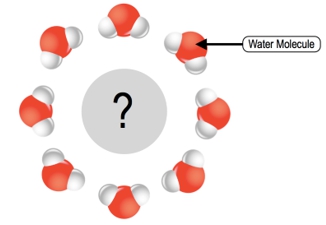Water is often referred to as the universal solvent due to its remarkable ability to dissolve a wide variety of substances, known as solutes. In this context, it is essential to understand the distinction between a solvent and a solute. The solvent is the substance that performs the dissolving, typically present in larger quantities and usually in liquid form. In biological systems, water is the primary solvent, making it a fundamental component of life.
The solute, on the other hand, is the substance that gets dissolved by the solvent, generally found in smaller amounts. For example, when table salt (sodium chloride, NaCl) is added to water, the water acts as the solvent while the salt is the solute. The ionic bonds in sodium chloride consist of a positively charged sodium cation and a negatively charged chloride anion. When salt is introduced to water, these ionic bonds are disrupted, allowing the individual ions to be surrounded by water molecules, a process that leads to the dissolution of the salt.
The combination of the solute and solvent results in a solution, which can be defined as the mixture of both components. Specifically, when water is the solvent, the solution is termed an aqueous solution, highlighting the role of water in biological systems. Aqueous solutions are prevalent in nature, as water is capable of dissolving various solutes, including proteins, nucleic acids, and carbohydrates, although it does not dissolve everything.
Additionally, when solutes dissolve in water, they are often surrounded by a layer of water molecules known as a hydration shell. This hydration shell plays a crucial role in stabilizing the dissolved ions and facilitating their interaction within the solution. Overall, the unique properties of water as a solvent are vital for numerous biological processes, underscoring its importance in sustaining life.


